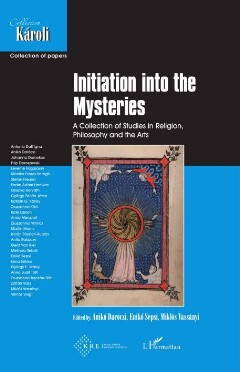Seite 59 [59]
THE STATUE OF ÁRTEMIS EPHESIA...
also with the assistance provided for a woman in labour.? If we accept the
hypothesis that different replicas of the cult statue reflect the different feasts
of the goddess, then the garment with the Cancer or the Rankenfrau and the
female figures could be connected with one of the greatest celebrations of
Artemis Ephesia, her birthday.*°
It is also interesting that there was an increase in the numbers of the
curetes and hierourgoi, who were responsible for the celebration of the
mysteries, in the same century as the one to which the replicas of the cult
statue have been dated. It is possible that there is a connection between these
two phenomena."
But all this is indirect evidence. Up to this point, I could prove only with
reference to one part of the sculptures that they are interpretable in the
mirror of a relevant source describing the journey of the souls in the universe
or the astral sphere. The question is whether this kind of visualization of
the journey of the soul became a feature of the statue as part of the mystery of
the goddess or was only shown on the basis of the goddess’ role as a midwife.
(Another question is how these ornaments got on the statue.’’)
Portefaix’s interpretation, according to which some parts of the statue
are related to death and others to life, is an approach which uses an overly
broad brush to draw conclusions about the content of the mysteries on these
grounds.
Given the lack of sources and the great variation in the adornments, we
are very far from having proved beyond a doubt that some statues or a part of
the statues could be visual representations of the mysteries. At the same time,
research into the allegorical interpretations of the other parts of the statues
may bring us a bit closer to an understanding of the significances of Artemis
Ephesia (as might the discovery of new sources), and this may offer further
insights into the depths of second-century religious life and the roles of this
ancestral and mysterious goddess in that religious life.
3° Strab. XIV, 1, 20.
10 For the celebration of goddess, see Oster, Ephesus as a Religious Center, 1709-1711.
“| Guy MacLean Rogers, The Mysteries of Artemis at Ephesos, New Haven and London, Yale
University Press, 2012, 128-129; 178-180.
12 Itis possible “that some elements of Mithraist religion infiltrated in the theology ofthe other
cult[.]” see Anna Judit Töth’s article in this collection of essays.
« 57 «
Daréczi-Sepsi-Vassanyi_Initiation_155x240.indb 57 6 2020.06.15. 11:04:12

